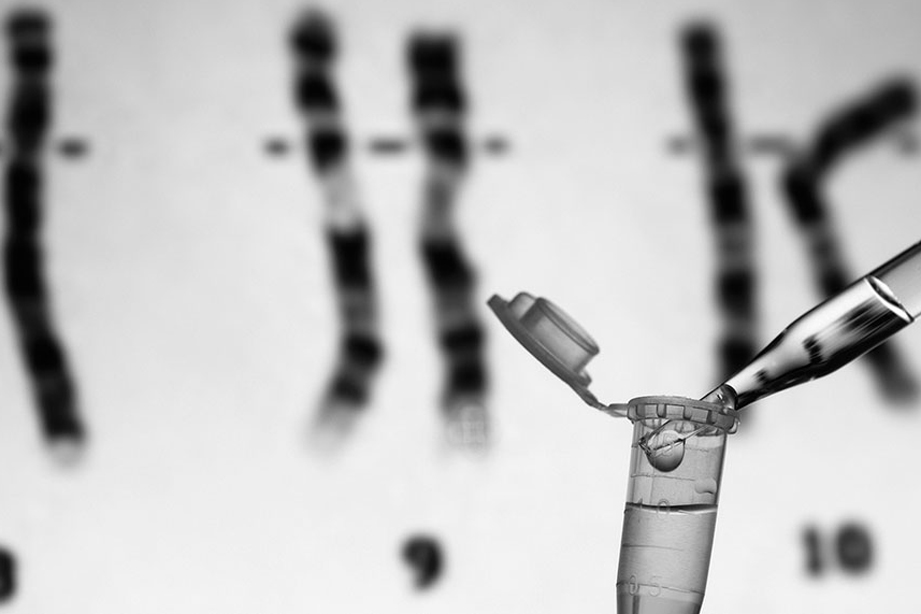Epigenetic Advances Could Aid in Development of FASD Diagnostic Tool
Project Category: Projects – Cycle II
January 5, 2021

Challenge
The study of epigenetics—how the environment influences gene expression—is a promising avenue when it comes to better understanding FASD. In the absence of the characteristic facial dysmorphology or confirmed prenatal alcohol exposure, it is very challenging to confirm an FASD diagnosis. Therefore, there is a considerable need to identify biomarkers of exposure that one can use in the diagnostic process and in predicting risk for FASD.
Project Summary
The research team examined epigenetic mechanisms underlying FASD in human cohorts of children and adolescents and in a rat model of prenatal alcohol exposure (PAE). Studies focused on genome-wide DNA methylation patterns, as DNA methylation is known to be a critical epigenetic mechanism. DNA methylation was investigated in a Canadian cohort of 206 children (110 with FASD and 96 controls) to identify patterns associated with FASD, and in an independent cohort of 48 children (24 with FASD and 24 controls) to validate these findings and develop a possible epigenetic predictor of FASD. Utilizing a well-established rat model of PAE, studies directly compared genome-wide DNA methylation patterns in the brain (specifically, the hypothalamus) and white blood cells to gain insight into the central vs peripheral effects of PAE on the epigenome during early postnatal development.
Result
Significant changes to DNA methylation profiles were identified in buccal epithelial cells (BECs) of children with FASD compared to age- and sex-matched typically developing control children; 658 CpGs displayed significantly altered DNA methylation levels, and 101 regions contained two or more sequential differentially methylated CpGs, spanning 95 different genes. Importantly, the majority of differentially methylated genes were highly expressed in postmortem brain samples, and tended to be involved in pathways or processes related to functional deficits seen in FASD, suggesting that changes observed in BECs could have functional significance for individuals with FASD. Data from the follow-up study identified a DNA methylation signature of FASD that replicated the altered DNA methylation levels of 161/648 CpGs in this independent cohort, validating the findings from the first study and suggesting a robust signature of FASD in the epigenome. Importantly, this signature was found to be moderately accurate as a predictor of FASD status.
Findings from the rat model of PAE support and extend the clinical data. We identified 118 differentially methylated regions (DMRs) that were altered in the hypothalamus of PAE compared to control animals. Importantly, 299 DMRs showed concordant DNA methylation changes in the hypothalamus and white blood cells, suggesting that peripheral changes in DNA methylation profiles could serve as a potential biomarker of PAE’s effects on the brain. In addition, and similar to the human data, several differentially methylated genes were functionally related to deficits observed following prenatal alcohol exposure, including changes in immune and neurobiological function, and mental health. Finally, several of the affected genes overlapped with those identified in human cohorts, providing further evidence of the power of animal models to elucidate possible mechanisms underlying the effects of PAE in humans
Taken together, evidence from both the human cohorts and the animal model helps to paint a clearer picture of FASD. It also brings researchers another step closer to developing biomarkers and diagnostic tools for early identification of children with the disorder.
Funding
This subproject was part of the larger “FASD: Early Life Adversity, Outcomes and Secondary Intervention and Prevention.” The FASD program was funded a total of $1,205,381 from the Kids Brain Health Network and $2,148,667 from participating partners.
Team
Principal Investigators
Dr. Joanne Weinberg, University of British Columbia
Michael Kobor, University of British Columbia
James Reynolds, Queen’s University
Dr. Elodie Portales-Casamar, University of British Columbia
Research Technicians, Associates and Assistants
Julia L. MacIsaac, Kobor Lab, UBC
Rachel D. Edgar, Kobor Lab (2014-2018)
Sarah M. Mah, Kobor Lab (2013)
David T.S. Lin, Kobor Lab
Rebecca Asiimwe, Kobor Lab
Alexandre Lussier, Massachusetts General Hospital
Tamara Bodnar, Weinberg Lab, UBC
Matthew Mingay, Michael Smith Laboratories Centre, UBC
Meaghan J. Jones, University of Manitoba